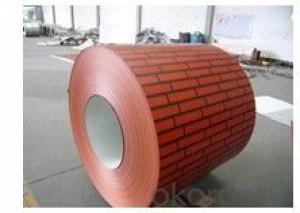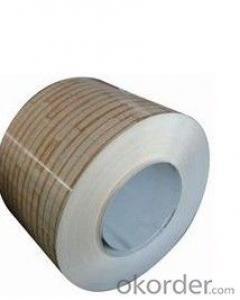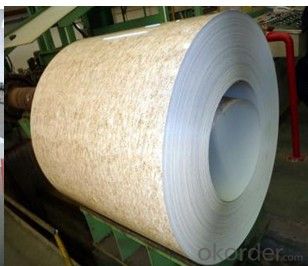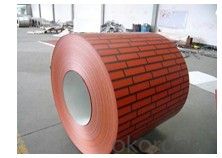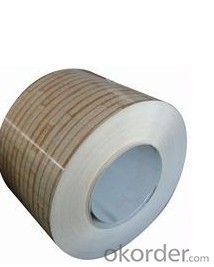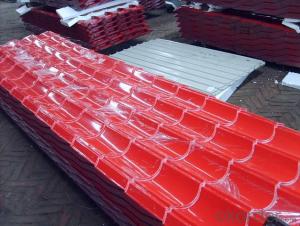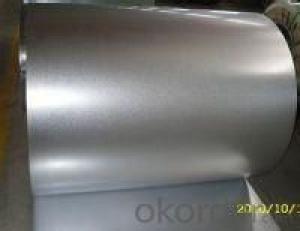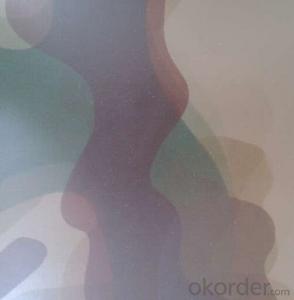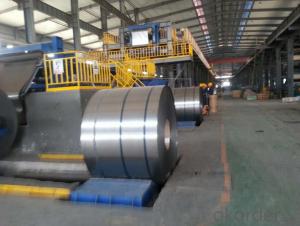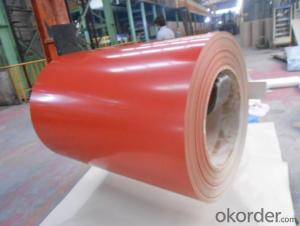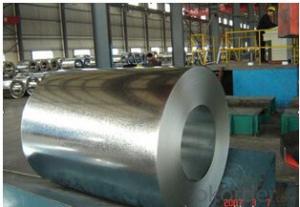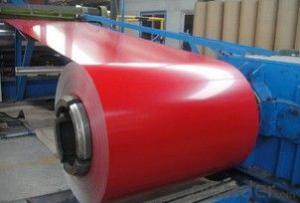EXCELLENT PATTERN PREPAINTED GALVANIZED STEEL COIL
- Loading Port:
- China Main Port
- Payment Terms:
- TT OR LC
- Min Order Qty:
- -
- Supply Capability:
- -
OKorder Service Pledge
OKorder Financial Service
You Might Also Like
EXCELLENT PRINT PREPAINTED GALVANIZED STEEL COIL
| Standard: | AISI,ASTM,BS,DIN,GB,JIS | Grade: | SGCC/CGCC/DX51D,CGCH,CGLCC | Thickness: | 0.13-0.8-1.2mm |
| Place of Origin: | China (Mainland) | Brand Name: | HJ steel | Model Number: | 0.42*1219*C mm |
| Type: | Steel Coil | Technique: | Cold Rolled | Surface Treatment: | Coated |
| Application: | Building construction,warehouse | Special Use: | Wear Resistant Steel | Width: | 1000/1200/1220/1250mm or under as request |
| Length: | coil or sheet as your require | color: | ALL RAL CO | zinc coating: | 50-140g/m2 |
| paint: | top side :15-25um back side :5-10um | Temper: | Full hard ,half hard ,soft |
MAIN SPECIFICATIONS:
1,Base Metal: Prepainted galvanized Steel Coil (PPGI/PPGL)
2,Zinc Coating: z50-z150,Az40-Az150
3,Thickness: 0.13-0.8-1.2mm
4,Width:914mm-1250mm or under as your require
5,Length: according to your requirement (unit of measurement: Ton)
6,Paint Coating: top side :15-25um back side :5-10um
7,Color:RAL color or customized as the sample
8,Minimun order:25Tons
9,Packaging Details: Fully seaworthy export packing
10,Price Terms:Fob Shanghai,CIF,CFR
- Q: What are the different types of steel coil edge trimming methods?
- There are several different methods used to trim the edges of steel coils, including slitting, shearing, and laser cutting. Slitting involves using circular blades to cut the edges of the coil, creating narrower strips. Shearing is a process that uses a straight blade to cut the coil edges. Laser cutting is a more advanced method that uses a laser beam to precisely trim the edges of the steel coil. These methods are used depending on the specific requirements of the steel coil and the desired end product.
- Q: How are steel coils used in the production of food processing machinery?
- Steel coils are used in the production of food processing machinery as they serve as a key component for constructing the machine's framework and structure. The coils provide durability, strength, and resistance to the machinery, ensuring its reliability and longevity in food processing operations.
- Q: We just installed a stainless steel electric stove, what is the best way to keep it clean and shiney?
- How grimy is your range? I actually have a stainless range and all I do is discover a soapy sponge on it, with dish cleansing soap. I get rid of each and all of the knobs and burners approximately as quickly as a week (and every time I fry something and splatter oil everywhere, yet i attempt to disguise issues with foil as quickly as I fry to sidestep a multitude). It takes possibly 5 minutes to scrub my range because I shop it clean and not in any respect, ever use it if it has spills on it. i've got found out via the years to wipe issues up right now, or the spills get baked on and become very confusing to get rid of. My range is electrical powered, so I take off the electrical powered burners and gently wash those with a soapy sponge too (I carry them and rub the soapy sponge on them, then carry them below the faucet to rinse, without getting the plug in factor section moist). My range continues to be very clean this way, and that i take advantage of the rougher side of a non-scratch sponge for something that desires some scrubbing. in the experience that your range has undesirable stains caught on it, you ought to use very, very advantageous metallic wool on it. An SOS pad will paintings, do in basic terms no longer rub too problematic or you will take off the shine from the range. SOS pads are ok on each and all of the immaculate areas of the range. whilst completed washing it, take a humid dish towel and wipe each and all of the cleansing soap off, then dry the range and it will seem large.
- Q: I want to buy a chain that will last a long time and that i can wear ALL the time.What are the disadvantages to stainless steel jewelry?Does it look as good as silver?Is there much diference in apperance?
- This Site Might Help You. RE: What Are The Disadvantages Of Stainless Steel Jewelry? I want to buy a chain that will last a long time and that i can wear ALL the time. What are the disadvantages to stainless steel jewelry? Does it look as good as silver? Is there much diference in apperance?
- Q: If steel content is too cheap, what content should I be looking for? I don't think I could find something like a VG-10 here...
- I okorder /
- Q: How do steel coils contribute to the energy storage industry?
- Steel coils play a vital role in the energy storage industry by serving as a key component in large-scale energy storage systems such as pumped hydro storage and compressed air energy storage. These coils are used in the construction of storage tanks and pressure vessels, which are essential for storing and releasing energy on demand. Additionally, steel coils are also utilized in the manufacturing of battery systems used in grid-scale energy storage applications, providing structural support and ensuring safety and reliability.
- Q: it seems like the hardness of Stainless steel, i saw 410c stainless stell, i saw 440c stainless steel, what does it means anyway?
- 440 okorder
- Q: How are steel coils used in the manufacturing of pipes and tubes?
- Steel coils are used in the manufacturing of pipes and tubes by being unwound and fed into a pipe or tube mill. The steel coils are then shaped and welded together to form a continuous pipe or tube, which is further processed and finished according to specific requirements.
- Q: We are going to build a house with a steel frame.Someone told me today that these houses have problems with humidity.Is that true?Please tell me all you know..
- the building I work in is steel framed, no humidity problems. I can't believe that steel frame anything causes humidity problems. I would ask for an explanation from whom ever told you this. One thing is cell phones, radios etc. have bad reception due to all the interference.
- Q: How are steel coils used in the manufacturing of automotive fuel tanks?
- Steel coils are used in the manufacturing of automotive fuel tanks as they provide strength, durability, and resistance to corrosion. These coils are formed and welded into shape to create the fuel tank, ensuring it can withstand the pressure and vibrations associated with storing and transporting fuel safely.
Send your message to us
EXCELLENT PATTERN PREPAINTED GALVANIZED STEEL COIL
- Loading Port:
- China Main Port
- Payment Terms:
- TT OR LC
- Min Order Qty:
- -
- Supply Capability:
- -
OKorder Service Pledge
OKorder Financial Service
Similar products
Hot products
Hot Searches
Related keywords

